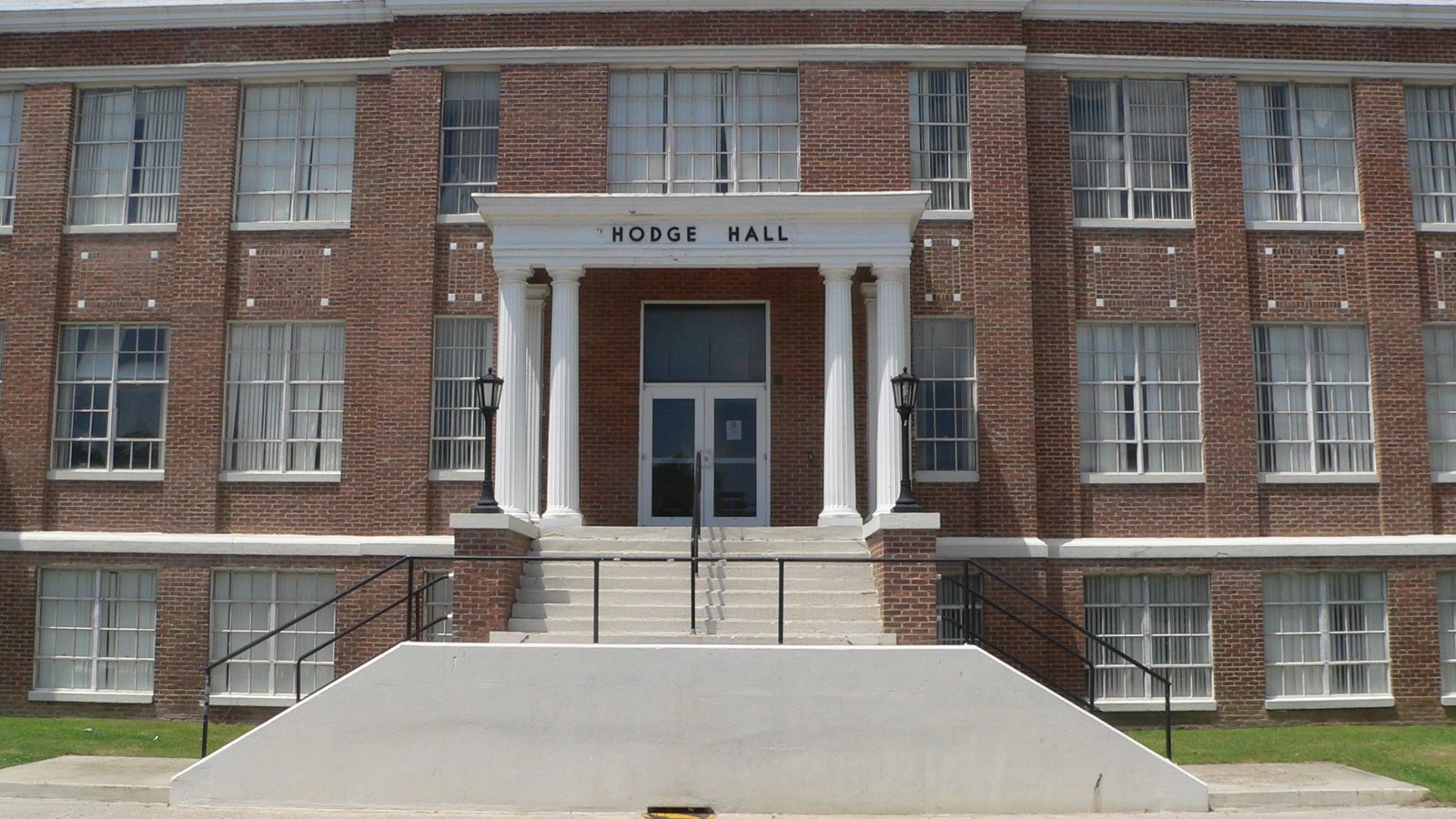Last updated: May 3, 2021
Place
South Carolina: South Carolina State College Historic District Orangeburg

By Ammodramus, CC0, https://commons.wikimedia.org/w/index.php?curid=39942708
Students at this black college organized sit-ins that contributed to the passage of the Civil Rights Act in 1964. Four years later, they led protests resulting in "The Orangeburg Massacre," which pointed out that passage of the Act was not the end of the struggle. The South Carolina State College Historic District is the core of the historic campus at South Carolina State University. The district consists of ten brick Classical Revival style academic buildings constructed between 1917 and 1969, which housed classrooms, laboratories, the library, offices, and the law school. The district also includes a 1920s landscaped square with a 1969 monument erected and dedicated to the memory of three students who lost their lives in the Orangeburg Massacre of February 8, 1968.
Orangeburg, South Carolina, was one of 40 cities that experienced student protests in March 1960. After several weeks of unsuccessful protests at city lunch counters, South Carolina State's Charles McDew led 1,000 marchers downtown. Police, firemen, and state troopers intercepted the students, firing tear gas and full-pressure water hoses into the crowd. Police arrested nearly 400 students.
"The Orangeburg Movement" Like the Birmingham Campaign a few months earlier, Orangeburg's mass movement focused on desegregating public facilities. On July 31, 1963, a South Carolina State student launched the movement by refusing to leave a local restaurant. Three weeks later, movement leaders demanded that City Council desegregate public accommodations, comply with court-ordered school desegregation, and expand job opportunities for African Americans. Mass demonstrations, which by now included children, continued until the passage of the Civil Rights Act on June 2, 1964.
"The Orangeburg Massacre" On February 8, 1968, two days after police and students clashed in a race riot at segregated All Star Bowling Lanes, violence broke out again, this time on the campus of South Carolina State. Students set grassfires and tried to burn down a vacant house. A highway patrolman was hit in the face by a bannister from the house, and a number of patrolmen suddenly fired into a crowd of students, killing three and injuring 27. Statues of the students who died--Samuel Hammond, Henry Smith, and Delano Middleton--were later erected on campus. In the first federal trial of police officers for using excessive force at a campus protest, all nine defendants were acquitted.
Visit the National Park Service We Shall Overcome travel itinerary to learn more about the civil rights movement themes and histories. Also, be sure to check out Civil Rights subject site.
A project through the Historically Black Colleges and Universities (HBCU) Grant Program, which helps preserve the historic structures on HBCU campuses, funded stabilization and preservation work on Wilkinson Hall at South Carolina State University in 2017.
